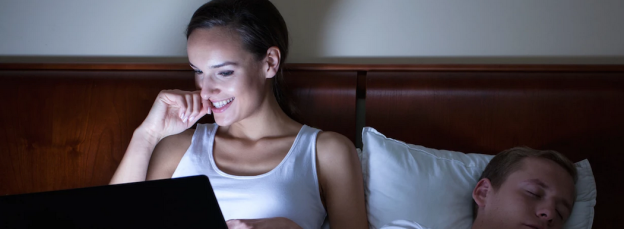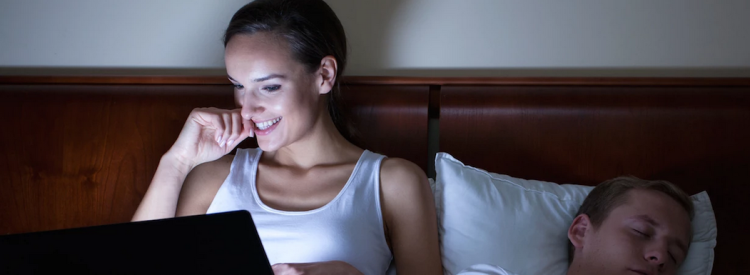This post was written for and originally appeared on MindBodyGreen here.
Sure, we could all use a digital detox. But getting offline can be a luxury. Technology is a common source of stress, but it doesn’t have to be. Truly, technology should be helping us improve our lives.
By adopting a few simple habits, we can develop a more mindful relationship with electronics, and actually start using technology to feel more present. Here are some tips to get you started:
1. Give yourself 30 tech-free minutes first thing in the morning.
Most of us check our phones first thing in the morning, but all of us would be healthier if we didn’t. Healthy adults experience a 50% increase of cortisol in the 20-30 minutes after waking up in the morning. This prepares your body for the stress of the upcoming day. In other words, our biology takes some time to prepare for the noise of the outside world.
Very successful people have learned that limiting their use of technology in the morning can set them up for success. So, however busy you are, it’s not an excuse.
Start by buying an alarm clock and charging your phone out of reach. A step further would be to create tech-free zones in your living space, your bed being one of them. Use this extra time to set up a morning routine that works for you. Think of your important tasks for the day while in the shower, or while making a healthy breakfast, rather than from behind your screen.
Take time to stretch, meditate, or brainstorm. Whatever you do, checking in with yourself before you check Facebook will help you prioritize and feel more centered throughout the day.
2. Motivate your movement.
Sitting behind a computer and hovering over our smartphones encourages bad posture and general ill health. If you can’t remember to get up and stretch regularly, set a recurring reminder on your calendar, or make sure you have to get up to get things from across the room.
Wearable gadgets like Fitbits and a plethora of smartphone apps can help us track our steps and fitness activity, making us more mindful of how much we move. Try setting personal goals, or making it a fun competition between friends.
Use the increase of popularity in yoga to your advantage by trying online classes. Movement for Modern Life gives you access to a broad range of videos by top instructors. The website lets you select style, length ,and benefits, so that you can do a guided practice in any scenario.
While this doesn’t mean we should cancel our gym membership or stop attending yoga classes, it can offer a solution for when life gets in the way.
3. Use the web to find your calm.
More than ever, we’re forcing our brains to become highly skilled multitaskers — to the point that taking even ten minutes to stop everything and breathe becomes a challenge. Just like we take out the garbage, or trash old files on our laptop, we should cleanse our minds on a regular basis, too.
The popular app Headspace offers an excellent, free course called Take 10 that introduces you to mindfulness with ten days of guided meditation. Buddhify is designed to give busy city-dwellers with less than 10 minutes to spare both guided and solo meditation options. Or, for a moment of zen between tasks, try Calm.
4. Save your sleep.
There’s a lot we don’t know about sleep. What we do know is that getting adequate, high-quality rest is one of the most crucial steps you can take to improving your overall health and wellbeing.
When we stare at electronic devices, they emit lights of all colors. The blue light in particular prevents our bodies from releasing melatonin, a hormone associated with nighttime rest. In other words, switching off well before bedtime can have a profound effect on how much rest you are getting.
For those who aren’t able to kick their bedtime tech habits, a software tool such as f.lux can adjust your the color of a laptop screen according to the time of day and surroundings.
There are also a plethora of tools, like Sleep Cycle, that you can use to better understand your sleep patterns. If sleep deprivation is a real problem for you, revolutionary apps such as Sleepio can help. Derived from cognitive sleep therapy, it can teach you techniques to find your sleep. Thinking of your bed as a place of rest, or a ‘non-tech’ zone, will help you fall asleep more easily, too.
There is no end of tools to help you improve your relationship with technology, but it starts with a mindset. By consciously adapting your habits, you’ll find you can enhance your health and happiness, and actually use technology to stay present.
> TRY OUR MEDITATION & SLEEP WELL VIDEO SERIES HERE >
 This post was written by Lisa Roolant, a communications strategist, writer, and avid fan of Movement For Modern Life. A ‘global citizen’ by birth, she is of Belgian origin, born and raised in Bangkok, and has adopted East London as her current home base. She is passionate about the transformative power of innovation and technology in ways it can change our world for the better. Her favourite yoga pose is the tree pose. Follow her on Twitter.
This post was written by Lisa Roolant, a communications strategist, writer, and avid fan of Movement For Modern Life. A ‘global citizen’ by birth, she is of Belgian origin, born and raised in Bangkok, and has adopted East London as her current home base. She is passionate about the transformative power of innovation and technology in ways it can change our world for the better. Her favourite yoga pose is the tree pose. Follow her on Twitter.






Leave a Reply